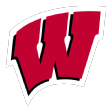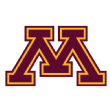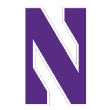Sometimes the most interesting divisions and conferences are not the most relevant from a national title perspective. The Big Ten West is a good example. Barring a(nother) second-year miracle from Scott Frost at Nebraska, it’s quite likely that there won’t be any division team involved in the CFP race come mid-November. But that doesn’t stop it from being maybe the most fascinating division in FBS.
Depending on how you feel about Jeff Brohm’s ability to rebuild on the fly at Purdue for the second time in three years, you can make a pretty solid case for up to six West teams winning the division. (Sorry, Illinois.) Nebraska obviously has a fantastic young coach and potentially thrilling young quarterback.
Minnesota was actually both better and younger than Nebraska last year and flashed massive upside. Northwestern won the division in 2018 with smoke and mirrors, but Pat Fitzgerald has an endless supply of such. Wisconsin is Wisconsin. Iowa is Iowa. The volume of story lines here is immense.
A quick reminder on terminology: S&P+ is the tempo- and opponent-adjusted efficiency measure I created at Football Outsiders in 2008.
Teams are listed below in order of S&P+ projections. Click here for the Big Ten East preview.
Jump to a team:
Wisconsin | Iowa | Minnesota | Nebraska
Northwestern | Purdue | Illinois

2018 record and rankings: 8-5 (No. 19 in S&P+, No. 24 in FPI)
2019 S&P+ projection: 9.1 wins (No. 11)
2019 FPI projection: 6.6 wins (No. 38)
In team sports, at least, stereotypes are often stereotypes for a reason. There is generally a kernel of truth in our assumptions. Take Wisconsin, for instance. Since Barry Alvarez broke through decades of struggle with a series of Rose Bowl bids, the Badgers have all but trademarked a certain style of play: run-heavy and physical on offense, equally physical and strong in containment on defense.
Wisconsin plays within itself, takes few risks, and leans on you till you fall over. Right? There have been more than enough 1,500-yard rushers and 20-16 wins to fulfill the prophecy. The name of the head coach has changed a few times, but the style and, for the most part, the wins haven’t abated.
The past couple of years have seen a couple of interesting plot twists, however.
In 2017, Wisconsin enjoyed a breakthrough. The Badgers rolled through the regular season at 12-0, rolling through their nonconference slate, skating through a pretty easy Big Ten West, and playing their best ball in their biggest games — they beat ranked Iowa and Michigan teams by a combined 62-24. They fell by only six points to Ohio State in the Big Ten championship, then walloped Miami in the Orange Bowl to finish 13-1 and seventh in the AP poll.
This team was Wisconsin, but more. The defense, led by first-year coordinator and former Wisconsin star Jim Leonhard, ranked fourth in defensive S&P+ and achieved that ranking through aggression. The Badgers were second in the country in havoc rate (total tackles for loss, passes defensed, and forced fumbles divided by total plays), and a full 47% of opponents’ incompletions, the most in the country, were due to a defensed pass (interception or breakup). Wisconsin was sound and big-play phobic, but it also took the fight to you and ended up the better for it.
Offensively, Wisconsin still ran the ball constantly, but when the Badgers needed to pass, they could do it. They had one of the most efficient passing-downs offenses in the country, with Alex Hornibrook distributing the ball to an outstanding, young receiving corps. This wasn’t just Wisconsin, it was Wisconsin+.
In 2018, then, you could say we saw Wisconsin-. The defense dealt with injuries up front, and both injuries and extreme inexperience in the back. D’Cota Dixon, the only experienced defensive back, missed four games, and the rest of the secondary was made up of freshmen and sophomores. The pass rush vanished, too.
Wisconsin sank to 59th in havoc rate and 29th in defensive S&P+ — not bad, but not nearly as good.
The regression put pressure on the offense to make plays, and the passing downs magic disappeared. First, Hornibrook struggled; then, he got hurt and lost his job to sophomore Jack Coan. He transferred to Florida State after the season.
Wisconsin was as good as ever at running the ball — Jonathan Taylor rushed for 2,194 yards and 16 touchdowns, and UW was second in rushing marginal efficiency. But the bonus features we saw in 2017’s squad were gone. The warning signs came early in a 24-21 loss to BYU, and the deficiencies created massive inconsistency in conference play — after winning seven Big Ten games by double digits the year before, they lost four such games.
So what now? After two extreme (in different ways) seasons, will the Badgers settle back into the 10-and-3-every-year rhythm we’re used to? It’s possible, but there could be more on the table if the QB position is more stable.
Taylor’s back, the receiving corps still features A.J. Taylor and Danny Davis III, and this year’s secondary is loaded with sophomores and juniors who got their feet wet in 2018. With Hornibrook gone, the starting job probably will go to either Coan or blue-chipper Graham Mertz, one of the most highly anticipated freshmen in school history.
In terms of turnover, the biggest questions come in units Wisconsin usually owns. The Badgers have to replace four starting offensive linemen, including two All-American guards (Michael Deiter and Beau Benzschawel) and 2017 All-American tackle David Edwards. This is Wisconsin, so there’s no shortage of large, cornfed beasts, but the experience level is down a couple of pegs.
The Badgers also lose their top three TFL leaders, all linebackers. The line is more experienced, but OLB Zack Baun is the only known playmaker in the front seven. The secondary should be better, but that would only matter so much if the pass rush falls off a cliff.

2018 record and rankings: 9-4 (No. 23 in S&P+, No. 16 in FPI)
2019 S&P+ projection: 7.7 wins (No. 25)
2019 FPI projection: 7.9 wins (No. 23)
It perhaps goes without saying that, to reach your goal in any sport and at any level, you’re going to have to win some close games. New England wouldn’t have won the Super Bowl this past season without an overtime win at Kansas City. Toronto wouldn’t have won the NBA title without winning six of eight games decided by two or fewer possessions in the late rounds of the playoffs. Virginia wouldn’t have won the NCAA basketball title without four straight one-possession or OT wins.
You could make the case that close games mean even more in the Big Ten West. In a conference with pretty equal talent levels and slower tempos (which create fewer possessions and give fewer opportunities for one team to pull away from the other), your fate is going to be tied pretty closely to whether you were able to pull games out late. Northwestern went 5-1 in one-possession conference games last year, which allowed the Wildcats to win the division despite mediocre stats. Iowa went 12-0 in the 2015 regular season thanks in part to five one-score wins.
The god of close games is fickle, though. Most teams’ close-game records drift back and forth over time. (Northwestern might be an exception in that regard.) A team’s record in the other games ends up pointing out how they’re trending as a program.
Iowa: trending well.
The 20-year Kirk Ferentz era has been one of consistently solid results — Iowa has, after all, won between seven and nine games in seven of the past nine years — but breaking the Hawkeyes’ record out into one- and multiscore results highlights some peaks and valleys.
• 1999-2000: 2-12 in multiscore games, 2-7 in one-score games
• 2001-05: 33-9 in multiscore games, 12-8 in one-score games
• 2006-07: 8-8 in multiscore games, 4-5 in one-score games
• 2008-10: 19-0 in multiscore games, 9-11 in one-score games
• 2011-12: 7-7 in multiscore games, 4-7 in one-score games
• 2013-18: 33-11 in multiscore games, 19-16 in one-score games
Since 2012’s odd 4-8 campaign (2-3 in multiscores, 2-5 in one-scores), Ferentz has embarked on a third sustained peak. Iowa hasn’t been quite as impressive as it was while going 19-0 in multiscore games in 2008-10, but the Hawkeyes are still 24-6 in such games since 2015. And while they haven’t come close to matching their rather lucky 12-2 record from 2015, S&P+ suggests they’ve continued to improve every year since then.
In fact, the Hawkeyes’ No. 23 ranking in S&P+ last fall was their highest since ranking 20th in 2010. They went 9-4 and came close to much more: Three of their four losses came by a combined 12 points.
That 2010 season, however, marked the end of one of Ferentz’s peaks. Can the Hawkeyes keep improving this time around?
The talent on the two-deep is encouraging. Quarterback Nate Stanley returns for his third year as a starter — barring injury, he should end up third in all-time passing yards in Iowa City — and while he’ll have to find some new go-to targets after losing both leading receiver Nick Easley and two first-round tight ends (T.J. Hockenson and Noah Fant), he’ll at least have junior wideouts Ihmir Smith-Marsette and Brandon Smith, both of whom shined at times last year.
Despite Iowa’s physical reputation, the Hawkeyes’ run game is rarely particularly good. It doesn’t lose yardage much, but it doesn’t gain all that much either. But it should at least improve with the return of three junior running backs (Mekhi Sargent, Toren Young, and Ivory Kelly-Martin) and four linemen with starting experience, including all-conference tackle Alaric Jackson. Perhaps that will help to keep Stanley and his younger receiving corps out of awkward downs and distances.
Depth could be an issue on defense, but the star power is high. Former blue-chip end A.J. Epenesa enjoyed a breakout 2018, recording 16.5 tackles for loss, 10.5 sacks, and 18 run stuffs, and he has a nice dance partner in Chauncey Golston (nine TFLs, 3.5 sacks, nine stuffs). The linebacking corps returns four of five contributors, and though safeties Amani Hooker (a fourth-round pick) and Jake Gervase are gone, the Hawkeyes still have Geno Stone and last year’s top four corners.
Continued improvement might be difficult, but Iowa is still projected a solid 25th in both FPI and S&P+. The Hawkeyes are projected to go 5-2 in multiscore games (just as they did in both 2016 and 2017), so the season will therefore be defined by the tight ones — as usual.

2018 record and rankings: 7-6 (No. 45 in S&P+, No. 48 in FPI)
2019 S&P+ projection: 7.5 wins (No. 33)
2019 FPI projection: 8.3 wins (No. 28)
To paraphrase former ESPN analyst Lou Holtz, a college football coach coaches a different team every week. Teams are collections of different impressions and levels of quality. Perhaps it makes sense that Holtz was at one point Minnesota’s head coach. Few teams give as many different impressions in a single year as PJ Fleck’s Golden Gophers did last fall.
Fleck’s second Minnesota team did all of the following things:
• Beat eventual MWC champion Fresno State (which finished 16th in S&P+)
• Destroyed Purdue 41-10
• Destroyed Wisconsin in Madison 37-15
• Destroyed Georgia Tech in the Quick Lane Bowl 34-10
The same team also did this:
• Lost at Maryland 42-13
• Lost at Nebraska 53-28
• Lost at Illinois 55-31
Minnesota started 3-0, lost four straight games by at least 16 points each, then won four of six to finish the season. The Gophers ended up 45th in S&P+, but that’s misleading — they basically either played like a top-20 or bottom-50 team in a given week.
This otherworldly volatility makes a lot more sense when you realize how young Minnesota was. The Gophers alternated between two freshman quarterbacks (Zack Annexstad and Tanner Morgan) and two freshman running backs (Mohamed Ibrahim and Bryce Williams) in the backfield. Plus, three of four primary receivers were freshmen, and those accounting for 42 of 65 line stars were either freshmen or sophomores.
The defense was far more experienced — and better — but still featured four freshmen and sophomores making at least 30 tackles and four or five more in the rotation.
Once star receiver Tyler Johnson elected to return to Minnesota instead of going pro, it became clear just how much of 2018’s production that 2019’s Minnesota team was going to have. With just a smidgen of consistency, the Gophers could be incredibly dangerous.
If there’s one thing Fleck has proven, it’s that he doesn’t mind taking his time when it comes to program building. In his first head coaching gig at Western Michigan, he took over a program that had been forever decent but never great under Bill Cubit. He proceeded to burn the two-deep to the ground in his first season, going 1-11 with a team about as young as Minnesota’s was last year: freshman quarterback, freshman and sophomore receivers, etc.
Fleck’s highly caffeinated, row-the-boat culture took hold pretty quickly, though. He recruited at an absurdly high level for a MAC school, and his Broncos went from 116th in S&P+ in his first season to 73rd in his second, 56th in his third, and 29th in his fourth. WMU went 13-1 in his final season in Kalamazoo.
His first couple of seasons at Minnesota have seen similar cultural change. They also produced clear growth last year. Granted, his recruiting doesn’t stand out as much as it did in the MAC, but it’s better than his predecessors managed, and it has already produced quite a few potential stars, from Morgan to Ibrahim to receivers Rashod Bateman and Chris Autman-Bell to a host of offensive linemen and defensive backs.
It has also produced some girth. With the return of senior running backs Rodney Smith and Shannon Brooks from injury, Minnesota has four exciting backs listed at 200 pounds or more. They will be running behind a line that features 6-foot-9, 400-pound Daniel Faalele, 6-5, 370-pound Curtis Dunlap Jr., and three other 300-pound veterans.
Ibrahim rushed for 224 yards in the bowl romp over Georgia Tech, and while Morgan and the receiving corps are interesting in their own right, there might be times when Minnesota doesn’t really have to think about throwing that much.
The Big Ten West is a fascinating place at the moment. Both of the division’s stalwarts (Iowa and Wisconsin) look as if they’ll be sturdy versions of themselves this year, last year’s division champ (Northwestern) will be starting a former Clemson blue-chipper at quarterback, Purdue boasts a veteran QB, one of the best players in America (Rondale Moore) and an experienced defense, and both Nebraska and Minnesota are high-upside mysteries. And while Nebraska has been the West’s preseason up-and-comer du jour (blue bloods always get the nod in this regard), the Gophers might be as or more ready.
The schedule alternates between likely wins and fascinating tossups. Per S&P+, the Gophers are slight favorites at Fresno State, Purdue and Northwestern, and at home against Nebraska. They are also one-score underdogs at Iowa, and at home against Penn State and Wisconsin.
There might not be a sure loss on the schedule, but there might be only four or five sure wins, too. Hello, Big Ten East wild card.

2018 record and rankings: 4-8 (No. 49 in S&P+, No. 57 in FPI)
2019 S&P+ projection: 6.4 wins (No. 45)
2019 FPI projection: 8.2 wins (No. 31)
A home-state favorite son who quarterbacked his team to its last national title, learned the ropes of modern football coaching, got his feet wet elsewhere, then returns home to save the home-state school. After a first-year reset, he puts the pieces in the right places and engineers a second-year miracle run, just as he did in his first head coaching job.
Admit it: That’s a pretty seductive tale right there. And since the favorite son in question is Scott Frost, it’s not completely far-fetched.
Frost appears almost lab-engineered to save the Nebraska football program. He played first for Bill Walsh, then for Tom Osborne in college. He indeed quarterbacked the Cornhuskers to the 1997 national title, then went to the pros and played safety for Bill Parcells, Bill Belichick, and Monte Kiffin, among others. Three years into his coaching career, he was already defensive co-coordinator at Northern Iowa. A year later, he was coaching offense on Chip Kelly’s Oregon staff.
By age 40, Frost’s coaching DNA was impeccable. And in his first head coaching gig, he inherited an 0-12 UCF squad, improved it by six wins in one year, then improved it another seven the next. His Knights went 13-0 in 2017, beat the team (Auburn) that beat both of the teams in the national title game (Alabama and Georgia), and defiantly claimed a share of the title for itself. Then he went home.
Frost’s first Nebraska team needed to show only marginal potential for the second-year hype train to come rolling in. It took a little while, but the Huskers got there. They began the season an unlucky 0-6 behind freshman quarterback Adrian Martinez, but despite youth, they rallied, winning four of six down the stretch and coming up just short in two other games (a five-point loss at Ohio State and a three-point loss at Iowa).
That was enough for the narratives generator. Even in mid-July, after bettors have had plenty of time to identify and exploit iffy odds, the Huskers are still, per Caesars, an 30-1 favorite to win the national title. Within the Big Ten, only Ohio State and Michigan have better odds.
So the narrative’s set. Do the Huskers, losers of 20 of their past 30 games, actually have any hope of living up to this new set of expectations? It’ll take a miracle. But in a more rational universe, we’d be talking about a team likely to take a nice, sustainable step forward. NU is projected 45th in S&P+ and 35th in FPI and has plenty going for it:
1. The second-year leap really does happen. A coach’s second season in charge does tend to be a common time for a step forward overall. Granted, it might not usually be as drastic as Frost’s second year at UCF, or Kirby Smart’s second year at Georgia (when the Dawgs went from 8-5 one year to within one play of the national title the next), but it’s a good time for improvement.
2. Martinez was pretty dang good for a freshman QB. He completed 65% of his passes (albeit at just 11.7 yards per completion), didn’t take a crazy number of sacks for a mobile freshman, and rushed for 789 non-sack yards. He has potential for a 3,000/1,000 season in him at some point.
3. The skill corps has nice efficiency options. The Huskers boast sophomores Maurice Washington and Jaylin Bradley, plus juco transfer Dedrick Mills at running backs, and though the departed Stanley Morgan was basically the only big-play wideout, Martinez has safety valves out the wazoo in slot receivers JD Spielman and Kanawai Noa (a Cal transfer), tight end Jack Stoll, and Washington, who caught 24 of 28 balls last year.
4. The defense is experienced and, well, has plenty of room for growth. Defensive coordinator Erik Chinander came with Frost from UCF, where he inherited a defense that had ranked 105th in defensive S&P+ in 2015 and averaged a top-50 finish over two years. But he didn’t make much headway last fall — NU actually fell from 40th to 55th. The Huskers have to replace their best pass rusher (OLB Luke Gifford) and top three safeties, but they could start as many as six seniors in the front seven, and cornerbacks Dicaprio Bootle and Lamar Jackson are super-active.
Unless Martinez turns into McKenzie Milton and some linebacker turns into Shaq Griffin — unless Frost has plenty of second-year pixie dust remaining, in other words — this shouldn’t strike anyone as a national title team. A potential West division contender and all-around exciting team, though? Absolutely.

2018 record and rankings: 9-5 (No. 68 in S&P+, No. 37 in FPI)
2019 S&P+ projection: 5.5 wins (No. 57)
2019 FPI projection: 5.7 wins (No. 52)
Sometimes it feels as if all the stats in the world cannot overcome a preordained fate. In 2018, it felt as if a higher power was willing one of Pat Fitzgerald’s less impressive Northwestern teams to a division title.
• On Oct. 13, Fitzgerald’s Wildcats trailed Nebraska 31-21 with less than three minutes left. They drove to the Nebraska 3 but moved backward and settled for a field goal. No worries! They forced a Nebraska three-and-out — only their third stop in Nebraska’s previous seven drives — and then somehow drove 99 yards in under two minutes, tying the score with 12 seconds left and forcing overtime, during which they picked off a fourth-down pass and nailed the winning field goal.
• On Nov. 10, after a narrow win at Rutgers, a more comfortable home win over WIsconsin, and a nonconference loss to Notre Dame, the Wildcats found themselves trailing Iowa 10-7 in Iowa City and had just missed a potential tying field goal attempt. But another well-timed three-and-out set up a miracle touchdown catch by Bennett Skowronek early in the fourth quarter. Then the defense both forced and recovered fumbles on back-to-back Iowa drives to ice the win and clinch the division.
Losing these two games seemed statistically likely and would have given the division title to Iowa, a better team on paper. But despite getting outgained in four of nine conference battles — and despite losing to Akron in nonconference play — Northwestern ended up 8-1 and rolled to the title.
The 2018 season was the logical extreme of Fitzgerald’s general “keep things close, and see what happens” approach. Very few coaches can consistently tame the close-game beast, but Fitzgerald might be one of them. In 13 seasons, he is just 51-44 in multiscore games — Northwestern has lost exactly three multiscore games each year for six straight seasons and has averaged 3.4 per year under Fitz — but is 45-26 in one-score finishes.
This is a knife that cuts in both directions, mind you; a lot of their tight wins have come against teams they should have handled much more easily. Still, the Wildcats slow the game down, keep the fight close, and trust that they’ll maneuver better than you in late-game situations. Akron aside, they’re usually right.
Stats don’t tend to trust teams like this.
Northwestern has occasionally looked as good on paper as on the field — the Wildcats were 27th in S&P+ in 2017, for instance. But last year’s team ranked a paltry 68th. This year’s team is projected to improve to 57th in S&P+ and 53rd in FPI, but the good news, as it were, is that seven games are projected within a touchdown. Win your requisite five of those, and you might be right back in the division race.
There’s at least a chance, however, that things go off-script this year. This year’s team appears to have more upside than most NU teams have.
It starts at quarterback, where Clemson transfer Hunter Johnson takes over. Johnson completed 21 of 27 passes as Kelly Bryant’s backup in 2017 but left when it became clear Trevor Lawrence was the heir apparent.
Last year’s primary security blankets (receiver Flynn Nagel and superback Cameron Green) are gone, but the most explosive pass catchers — namely, Skowronek, junior Kyric McGowan, and sophomore JJ Jefferson are back. So is all-or-nothing running back John Moten IV, who battled injury for much of 2018 but ripped off a 29-yard run against Illinois and a 77-yard score early in the Big Ten championship game against Ohio State.
There is far more potential explosiveness on this offense than we’re used to seeing. We’ll see if the Wildcats actually take advantage of it. Last year’s run game was dreadful, especially after the retirement of starting running back Jeremy Larkin. With Moten banged up, freshman Isaiah Bowser got most of the work between the tackles; he had a couple of excellent games, namely against Iowa and Illinois, but otherwise ground out about 3.6 yards per carry.
Mike Hankwitz’s defense is also more experienced. The Wildcats ranked a solid 30th in defensive S&P+ (their fourth time in the top 30 in five seasons) despite battling injury and leaning on quite a few sophomores — linebackers Blake Gallagher and Paddy Fisher, end Samdup Miller, safeties JR Pace and Travis Whillock. With experience, stability, and ace pass-rusher Joe Gaziano could come a top-15 ranking.

2018 record and rankings: 6-7 (No. 44 in S&P+, No. 40 in FPI)
2019 S&P+ projection: 5.4 wins (No. 58)
2019 FPI projection: 4.8 wins (No. 62)
Has a head coach ever made a better impression while going .500?
Purdue head coach Jeff Brohm took over in West Lafayette at one of the football program’s most hopeless times. The school doesn’t have the most storied football history, of course, but in the four years before Brohm’s arrival, the Boilermakers had gone just 9-39. That’s a win percentage of .188, worse than anything you’ll find from the desolate late-1980s and early-1990s, or the win-paltry 1930s, or even the 1900s, which included back-to-back 0-5 campaigns.
The Darrell Hazell era (2013-16) was hopeless from the start. Purdue ranked worse than 80th in both offensive and defensive S&P+ every year that Hazell was in charge. Brohm inherited a roster devoid of either standout talent or hope.
Within this context, a 13-13 record through two seasons is near miraculous.
In Brohm’s first game, Purdue scared the heck out of Lamar Jackson and Louisville. In his third, the Boilermakers destroyed Missouri in Columbia. And after a midseason slump, Purdue won four of its last five games to finish with its first winning season in six years.
Brohm’s second season was basically the inverse of his first: horrible start (three losses by a combined eight points), fantastic middle (five wins in six games), shaky finish (three losses in four). The year ended with a humbling 63-14 loss to Auburn in the Music City Bowl.
Still, that middle portion left a large impression. Purdue thumped Boston College and Illinois, won at Nebraska for the first time, beat Iowa for the second straight year, and, of course, ran laps around Ohio State in one of the 2018 season’s most thrilling Saturday nights.
After the season, the impressions continued. First, Brohm spurned his alma mater, Louisville, to remain in West Lafayette. (He would sign a massive contract extension in the spring.) Then, he signed a top-25 recruiting class.
Long term, the view from Ross-Ade Stadium is as optimistic and exciting as it has been in 15 years, maybe longer. Brohm has proven tactically adept, he’s making big bucks, and he just signed as many four-star prospects in one class (six) as Purdue had managed in its previous five classes combined.
I’m curious how much buzz will dissipate with another mediocre season, however.
Purdue broke through offensively in 2018 but now must replace quarterback David Blough, its top two rushers, five of eight players with double-digit receptions, and four of last year’s six primary offensive linemen. Even with the return of potential All-American receiver Rondale Moore, plus 2017 starting quarterback Elijah Sindelar, that’s enough attrition that the Boilermakers are projected to slip from 17th to 42nd in offensive S&P+.
Offensive regression will put pressure on the defense to rebound in a hurry. The Boilermakers lost a ton of production from 2017’s excellent unit and fell from 32nd to 88th in defensive S&P+. Of the 14 players who made at least 15 tackles last year, however, 12 are back. The two departures, safety Jacob Thieneman and corner Antonio Blackmon, could hurt, as both were strong playmakers. Still, the depth here is undeniable, and with the addition of Western Kentucky transfer Ben Holt, Purdue could boast one of the most exciting linebacking corps in the conference.
Defensive improvement is imminent, but how much? And can Sindelar’s return create a bridge of sorts between the present and future tenses? Purdue has exciting young talent everywhere you look, from quarterback (four-star redshirt freshman Jack Plummer) to running back (incoming freshman King Doerue) to receiver (Moore, redshirt freshmen Amad Anderson Jr. and Kory Taylor, incoming blue-chippers David Bell and Milton Wright). But the 2019 schedule is relentless.
Per S&P+, Purdue begins the season with four games all projected within four points (at Nevada, Vanderbilt, TCU, Minnesota). The Boilers face conference road trips to Penn State, Iowa, and Wisconsin and have only one comfortably projected win all year (Illinois at home). Every game could be tight and emotionally fraught, and if the right offensive recipe doesn’t quickly emerge, then something like an 0-5 or 1-4 start is on the table.
Of course, there aren’t many sure losses either if Sindelar-to-Moore is powerful and the defense resumes its 2017 form. This year’s most likely record (5-7 or 6-6) might be increasingly familiar, but there’s a lot of potential variance here depending on what rhythm the Boilers find and how quickly they find it.

2018 record and rankings: 4-8 (No. 97 in S&P+, No. 79 in FPI)
2019 S&P+ projection: 4.7 wins (No. 91)
2019 FPI projection: 4.0 wins (No. 98)
You can’t say Lovie Smith isn’t trying to fix what ails the Illinois football program. You can, however, wonder if he’s capable of pulling it off.
Two years (and only two conference wins) into his Illinois tenure, Smith found himself unable to overcome one tiny, niggling problem embedded in his two-deep: a crippling lack of high-end talent. Funny how something like that can trip you up.
In these two seasons, Illinois had gone from stagnant (4.9 wins per year over the previous eight seasons) to downright bad. Smith’s offense was dreadful (106th and 109th, respectively, in offensive S&P+), and though his defense was better, relatively speaking, it wasn’t anywhere near good enough.
Even worse, it wasn’t like a particularly bad unit — quarterback, or offensive line, or secondary, or whatever — was dragging things down. The lack of talent was comprehensive; not a single Illinois player earned any all-conference distinctions in 2017.
This is a difficult problem to right on the fly, at least not without signing 15 juco transfers in a single class (and thereby destroying future depth and class balance)*. But to his credit, Smith tried his best.
• To shore up miserable St. Louis-area recruiting, he hired Cory Patterson, an up-and-comer in the St. Louis high school coaching ranks, as his tight ends coach. That quickly bore fruit — in the 2019 class, Illinois signed three ESPN four-star prospects from St. Louis: QB/ATH Isaiah Williams, LB Shammond Cooper, and DE Moses Okpala.
• To establish a stronger offensive identity to recruit to, he brought in former Rich Rodriguez assistant Rod Smith as offensive coordinator. He also signed dual-threat quarterback transfer AJ Bush Jr. from Virginia Tech. Bush rushed for 831 non-sack yards in 2018 and combined with RB Reggie Corbin to establish a truly exciting rushing attack for the first time in a while.
* Illinois has done the load-up-on-jucos thing before, and it nearly resulted in the Illini leaving the Big Ten.
With an exciting identity and something resembling recruiting momentum (Illinois’ class ended up ranking 52nd, just barely ahead of that of 2016 or 2017, but where the high-end talent came from was encouraging, if nothing else), the Illini did at least improve to 4-8 last fall.
Illinois looked randomly awesome, walloping Rutgers and Minnesota, scaring Penn State for a couple of quarters, and scoring big on Maryland and Nebraska. But the offensive improvement was tempered by defensive collapse. Defensive coordinator Hardy Nickerson resigned for health reasons in October, and Smith ended up taking on the DC role himself.
He also kept looking for talent upgrades into 2019. He succeeded to a degree and almost succeeded so much more.
Smith landed former blue-chippers from Alabama (OL Richie Petitbon), USC (DE Oluwole Betiku Jr. and WRs Trevon Sidney and Josh Imatorbhebhe), Washington (LB Milo Eifler) and Georgia (TE Luke Ford). For good measure, he added Valparaiso receiver transfer Donny Navarro, who averaged nearly 17 yards per catch at the low-FCS level.
Ford’s request for immediate eligibility, however, was denied, and two more wide receiver transfer commitments — Miami’s Jeff Thomas and Oklahoma’s A.D. Miller — ended up returning to their original schools. Meanwhile, Bush graduated, and likely successor M.J. Rivers II announced he was transferring. Smith added Michigan transfer Brandon Peters, but he’s not a runner.
Two steps forward, one and a half steps back.
Peters could be a stopgap if the mobile youngsters behind center — Williams, plus redshirt freshmen Matt Robinson and Coran Taylor — just can’t handle passing responsibilities enough. But the best-case scenario is that one of the youngsters wins the job and does a solid Bush impersonation in the run game. Corbin and veterans Ra’Von Bonner, Mike Epstein, and Dre Brown combined to average 7.4 yards per carry, and Illinois returns four-fifths of last year’s starting line. The talent upgrade at receiver could be particularly noticeable if opponents still have to fear a dynamic run.
The defense … well … we’ll see. The Illini were bad against the pass and horrid against the run, and while they were extremely young — of the 19 players to make at least 10 tackles last year, 17 return, and 12 were freshmen or sophomores — the amount of actual talent isn’t yet evident. Betiku and Eifler will be asked to live up to their recruiting rankings instantly, as could Cooper, Okpala, and four-star corner Marquez Beason. The athleticism is higher than it was a year ago, but there’s a long way to go to even reach defensive mediocrity.

